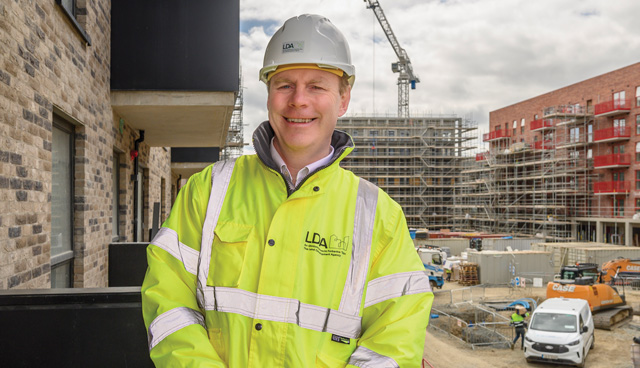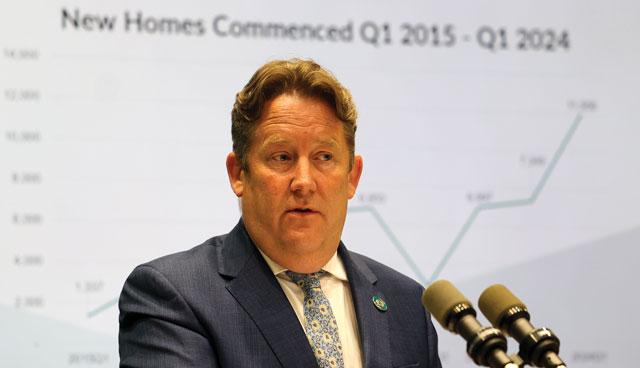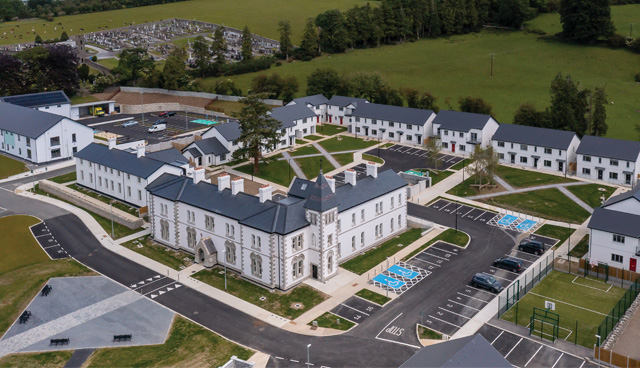
Design and delivery of affordable housing: Some of the best examples in Ireland
4th July 2024
Housing quality linked to wellbeing outcomes for families
4th July 2024Rent restrictions impeding housing supply

Spencer Place, Dublin 1 developed by Ronan Group and managed by Hooke & MacDonald.
Rent control was first introduced in Ireland in 1915. As unintended consequences emerged in the following decades, numerous changes were made to the legislation. However, all this tinkering caused vast swathes of properties in our cities and towns falling into disrepair and dereliction.
Landlords had no incentive or revenue to keep their properties in good conditions for their tenants. Due to the efforts of a number of parties, including the late solicitor Paddy Madigan, legislation was introduced in 1982, 67 years after it was first introduced, ending rent control with the Housing (Private Rented Dwelling) Act 1982.
Unfortunately, the lessons of the past were not learned. In 2004, a limited form of rent control was introduced followed in 2016 by rent pressure zones (RPZ) and further restrictions followed in 2021. The most damaging blow came in 2022 when rents were capped at 2 per cent, totally ignoring the fact that, with inflation and interest rates running at more than double this, the effect would be a damaging curtailment of rental supply and the rental market to become more dysfunctional due to a myriad of unintended consequences. If supply is to get back on track and rents to stabilise the 2 per cent cap needs to be removed.
Against this background the government have unfortunately extended the measure until December 2025. The fact that rents have been rising faster outside Dublin, where institutional investors have not been active, confirms that these entities have not been responsible for rental inflation – on the contrary they have helped to increase supply – the lack of supply being the main cause of rental inflation.
In the first quarter of 2024, according to the Daft Rental Price Report Q1 2024, market rents in Dublin cooled to 2.5 per cent compared to a year previously. The report confirmed that the number of homes available to rent on the open market remains low. On 1 May 2024, just over 2,000 homes were available to rent, effectively unchanged on the same date a year previously and well below half the 2015-2019 average of almost 4,400. Availability had almost doubled between late 2022 and late 2023 but has fallen considerably since the start of the year, mainly due to small landlords exiting the market and institutional funders being discouraged by conditions.

National Property Awards Real Estate Agency of the Year 2022 and 2023 (L-R): Judy Sorohan, Conor Steen, Suzie Cantwell, Donald MacDonald all from Hooke & MacDonald
Commenting on the report, Ronan Lyons, Associate Professor in Economics at Trinity College Dublin and author of the Daft.ie Report, says: “Rental inflation has slowed considerably over the last 18 months, driven in large part by the construction of significant numbers of new rental homes in the Dublin area. More supply, even at the upper end of the market, relieves pressures across the market and, in the second half of 2023 in particular, new supply saw availability improve and inflation has eased.
“However, improvements in the availability of homes to rent look to have stalled. Without additional increases in rental supply, any pressure on rents is likely to be upward in nature, further straining affordability for those on regular incomes. For that reason, policymakers must develop a thorough understanding of rental supply dynamics ahead of a detailed plan on dramatically increasing rental supply over the rest of the decade.”
The Housing Commission report
The final version of The Housing Commission report which was published in May 2024 contained a number of interesting findings. It recognised that the scale of the deficit in housing supply is far bigger than previously acknowledged and that a period of “accelerated housing delivery” is recommended. In order to achieve this the report proposes that diverse sources of finance, including stable public financing and a predominant international element, are available to increase housing output in the medium term.
The report advised the Government to scrap the current rent pressure zone rules which limit rent increases to 2 per cent per annum. While this is a sensible proposal to increase funding for the private rental market, it is unfortunate that they then go on to suggest that it should be replaced by a complex and unwieldy mechanism involving rents being calculated based on “reference rents” set for different parts of the country. It is significant that three members of The Housing Commission said that “the quasi permanent rent controls” being proposed “would adversely impact supply”. They state that the best control on rents comes through achieving adequate supply. They are absolutely correct in the assessment as the rent cap has stifled supply, forced rents upwards and increased hardship on those seeking rental accommodation.
If the 2 per cent rent cap was removed there would be a surge in funding for the rental sector. The international and domestic capital that the market needs would again support housing supply. The main factors preventing this to date are misguided ideology and a failure by policymakers/politicians to appreciate or face up to the unintended consequences of rent control and the evidence that it has severely damaged the rental sector.
One point that is not generally taken into account when discussions take place about rental levels is that there is a vast gulf between the quality and energy efficiency of apartments built in Ireland since 2016 and those built prior to that. There is also a further gulf between those built prior to the turn of the century. To treat these three categories as if they had the same rental value is a fallacy and inequitable.
The apartments that were built in the past eight years are of an exceptional standard, including the provision of multiple resident facilities, high quality specifications and architectural designs. By producing these buildings for a segment of the population, including high tech, pharma and financial services personnel, it is adding to overall supply and freeing up rental accommodation for those relying on the lower and middle markets. To suggest that the top end properties should be restricted to the same rental levels as inferior properties would lead to a further contraction in rental property supply.
Hooke & MacDonald
118 Baggot Street Lower
Dublin 2
PSRA No. 001651
T: 01 661 0100
E: info@hmd.ie
W: www.hookemacdonald.ie







